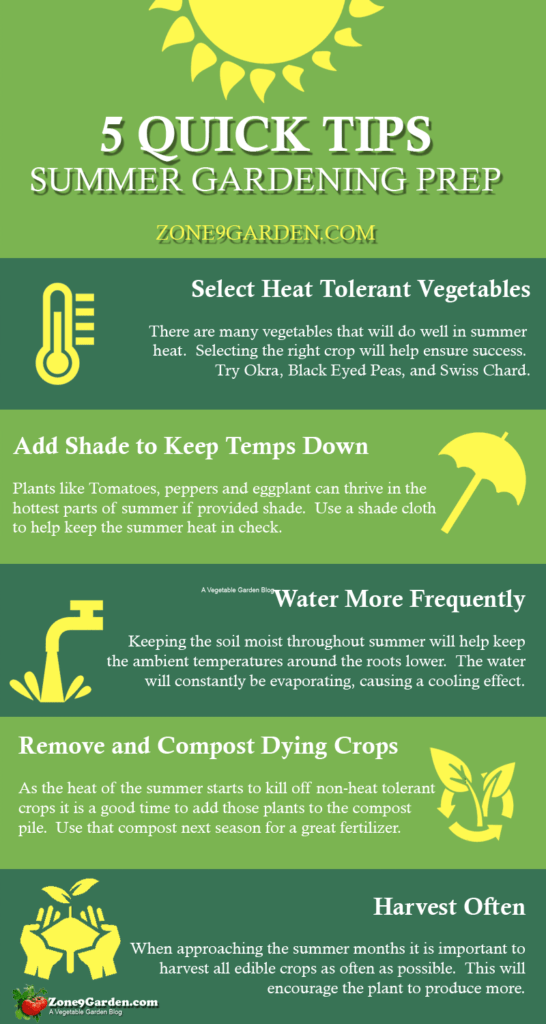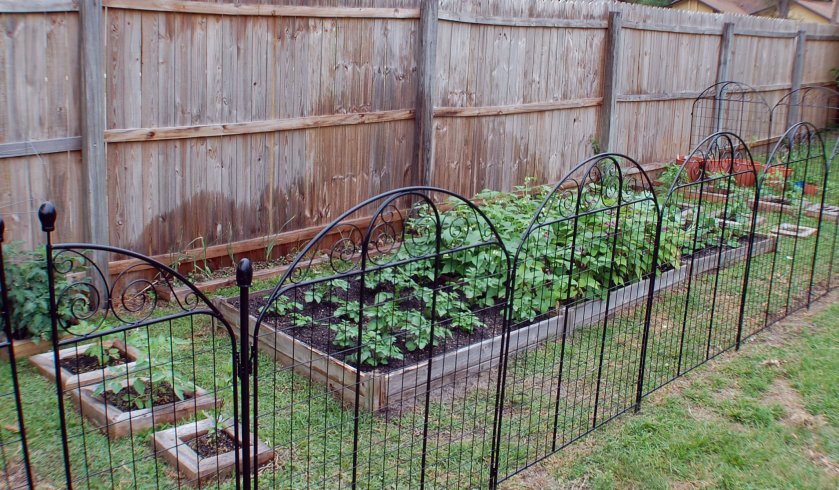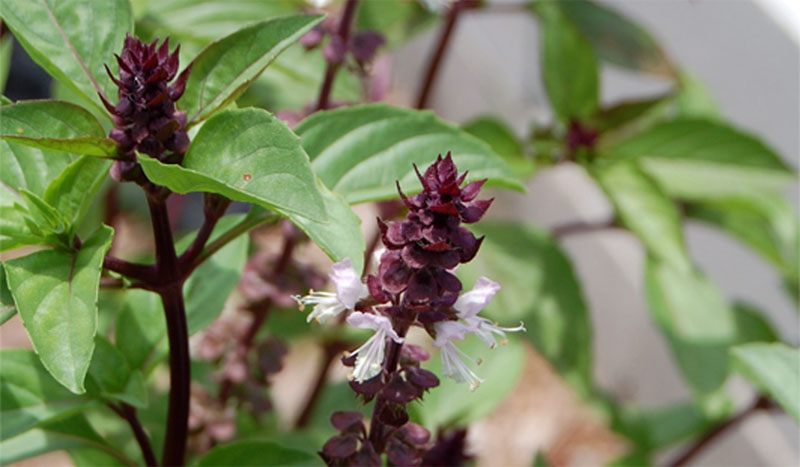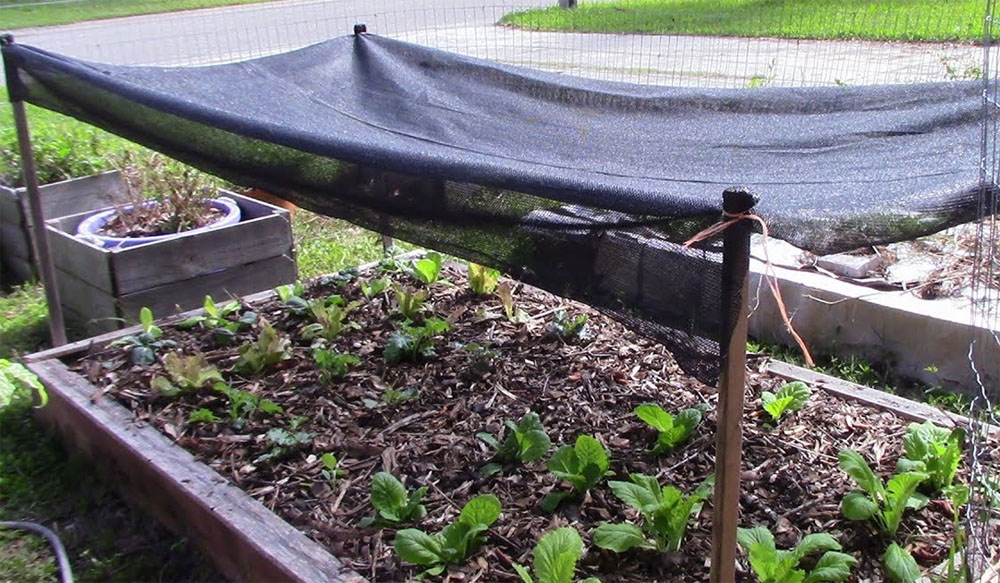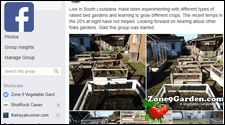Zone 9 is known for have hot summers that can be quite difficult to have a successful garden in. To help increase the chances of having a successful season it is important to prepare your garden for the summer. Here are 5 tips to help:
- Select heat tolerant vegetables
- Add shade for semi-heat tolerant vegetables
- Water more frequently
- Remove and compost all non-heat tolerant crops
- Harvest Often
1. Select heat tolerant vegetables
There are many vegetables that will do well in the summer heat in zone 9. Okra, black eyed peas and Swiss chard. These plants should be sown in mid-spring to make sure they are ready to be transplanted by the end of spring and allow for a bountiful harvest during the heat of summer. (See our Summer Planting Guide here)
2. Add shade for semi-heat tolerant plants
Plants like tomatoes, peppers and eggplant can thrive in to the early parts of summer if they are given shade from the sun. A good shade cloth will not only cut the amount of sun that is hitting the plants but it will also keep the temperatures down and reduce evaporation.
3. Water more frequently
Keeping the soil moist through out summer will help keep the ambient temperatures around the roots lower. The water will constantly be evaporating, causing a cooling effect. The chance of mold and mildew are reduced during the summer because of the constant evaporation, so watering more frequently will have little-to-no adverse affects on most crops.
4. Remove and compost all non-heat tolerant crops
As the heat of the summer starts to kill off non-heat tolerant crops it is a good time to add those plants to the compost pile. During the summer there will be an abundance of grass clippings available, so slower composting materials, like plant leaves and roots are a welcome addition to the pile.
5. Harvest Often
When approaching the summer months it is important to harvest all edible crops as often as possible. This will help keep the plants attention on growing more fruit or edible leaves and not on growing larger.
Here is a infographic on we made about this subject!



